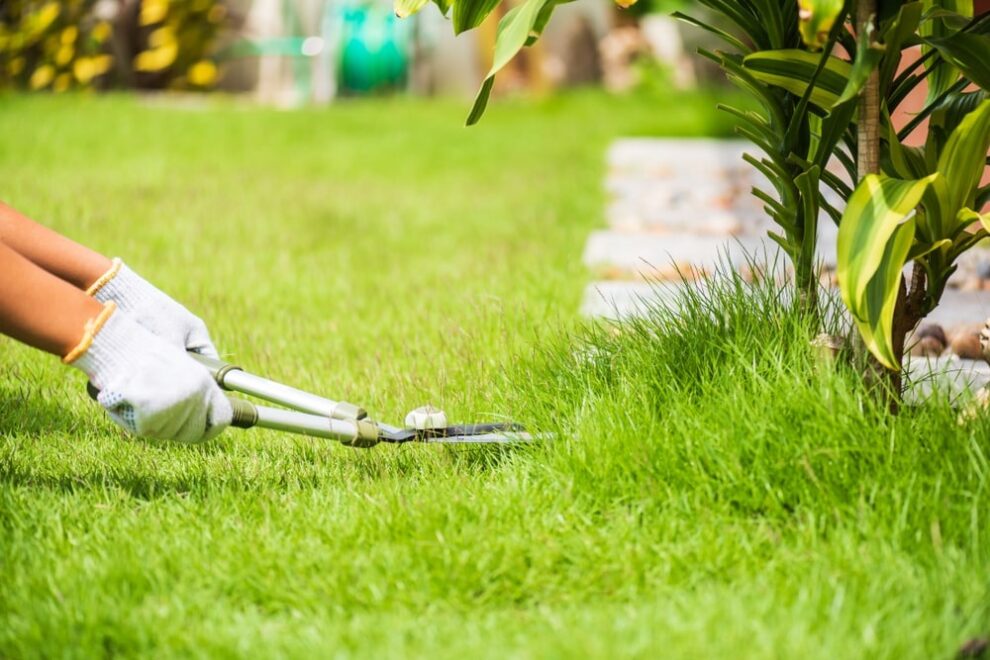As the saying goes, “the grass is always greener on the other side.” However, keeping a healthy and vibrant lawn requires more than just wishing for it. A well-maintained lawn not only enhances the aesthetic appeal of your property but also contributes to a healthy environment and lifestyle. To achieve a lush green lawn, you need to understand the basics of soccer field grass maintenance. Whether you are a seasoned homeowner or a beginner, this Fieldgrass 101 guide provides essential tips for maintaining healthy turf.
In this post, we’ll discuss the basics of fieldgrass maintenance
Regular mowing promotes healthy growth.
Regular mowing is an essential part of proper soccer field grass maintenance. It not only keeps the field looking neat and tidy but also promotes healthy growth. When grass is left uncut for too long, it becomes weak and spindly, making it more susceptible to disease and pests. Mowing at the appropriate height for the specific type of grass on the field can help encourage thicker, healthier growth. It also helps to reduce the competition for nutrients and water between the grass blades, allowing the roots to grow stronger and deeper. A consistent mowing schedule ensures that the grass is always at the right height, preventing it from becoming too tall and reducing the overall quality of the field.
Proper watering is crucial for hydration.
Proper watering is crucial for hydration in soccer field grass maintenance. The amount and frequency of watering are two important factors to consider when maintaining healthy turf. Overwatering can lead to soil saturation and root rot, while underwatering can cause the grass to become dry and brittle. It’s essential to water the grass deeply and infrequently to promote deep root growth and prevent surface evaporation. A good rule of thumb is to provide 1-1.5 inches of water per week, including rainfall. The best time to water the grass is early in the morning when the temperature is cooler, and there is less wind. This will allow the water to penetrate the soil and be absorbed by the roots before the heat of the day causes evaporation. By following proper watering techniques, you can ensure that your soccer field grass stays hydrated, healthy, and ready for game day.
Fertilize to boost nutrient balance.
Soccer field grass maintenance requires consistent and careful attention to keep the turf in top condition. One essential tip for maintaining healthy turf is to fertilize to boost nutrient balance. Regular fertilizer applications can help promote growth and maintain a healthy balance of nutrients in the soil. The type and frequency of fertilizer applications will depend on the specific needs of the soccer field and the type of grass. It is important to consider factors such as soil pH, grass type, and usage when determining the appropriate fertilizer program. A soil test can be useful in determining the specific nutrient needs of the field. Proper fertilization can help ensure that the soccer field stays healthy and vibrant throughout the season.
Aerate to improve soil structure.
Aerating is an essential technique in soccer field grass maintenance to improve soil structure. Aeration involves creating small holes in the soil to allow air, water, and nutrients to penetrate the surface and reach the roots of the grass. This process helps to reduce soil compaction, which leads to inadequate drainage and root growth. Aeration also stimulates the growth of beneficial microorganisms in the soil, which break down organic matter and release nutrients that benefit the grass. It is recommended to aerate soccer fields at least once a year, ideally in the fall or spring when the grass is actively growing. This technique can be done using manual aerators or power aerators, depending on the size and condition of the field. Aeration is an excellent way to maintain healthy turf and enhance the playability of soccer fields.
Weed control prevents invasive species.
One of the most crucial aspects of soccer field grass maintenance is weed control. Weeds can easily sprout and take over a soccer field, causing damage to the turf and creating an unsightly appearance. Furthermore, invasive species can quickly spread and overpower the existing vegetation, resulting in a decrease in the quality of the playing surface. By preventing invasive species from taking root, you can maintain healthy turf that is conducive to a safe and enjoyable playing experience. Implementing an effective weed control program that includes regular mowing, fertilization, and herbicide applications can ensure that your soccer field remains free of unwanted plants and maintains its optimal condition.
In conclusion, maintaining a healthy turf requires dedication, patience, and a consistent approach. From proper mowing techniques to regular fertilization and irrigation, paying close attention to the needs of your fieldgrass is essential for its long-term health and vitality. By implementing the essential tips outlined in this article and seeking the advice of experienced professionals such as BSG landscape & construction, you can ensure that your turf remains lush and green for years to come. Remember, a healthy turf not only enhances the aesthetic appeal of your property but also provides a safe and functional playing surface for athletes and recreational enthusiasts alike.









